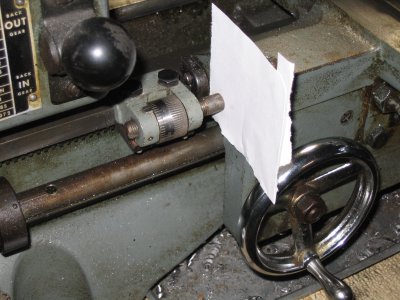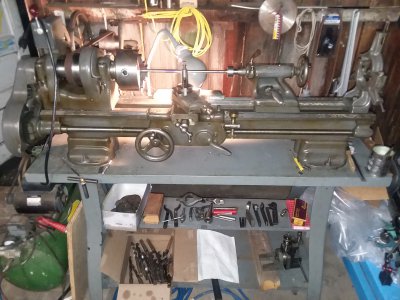- Joined
- Feb 28, 2019
- Messages
- 499
Southbend has a clutch in the carriage drive that generally saves it from damage but you shouldn't rely on it as your first choice.
Perhaps my dry and sarcastic sense of humor didn't really translate to a quick Saturday morning response, My Bad.
David R8's response reminded me that I often to the same
On my 10K I did some experiments to get a feel for how many turns of the clutch knob achieved engaged the clutch.
When I’m doing an op that runs close to the chuck I have my hand on the clutch knob and disengage it when/where I want the carriage to stop.
The original posters question is specifically in regards to his SouthBend 10K - which has (to my knowledge) the exact same controls as my 9A
The clutch on for the power feed on these lathes is engaged / disengaged with the twist of a knob on the carriage, that's it, that's all you got other than disengaging the drive belt. Additionally, how tight the clutch holds is controlled by how hard you twist the knob.
If you don't crank the hell out of the clutch knob, it will be the first point in the drive train to slip IF you happen to screw up and hit the stop or something else (going toward the tail stock, you can bind up the carriage on the tail stock). There is no way to "trip the power feed" on these lathes. (correct me if I'm wrong).
To be clear, you should never CHOOSE to use a stop as the way to stop carriage motion. I will often set one up to prevent me from doing something stupid, like manually cranking the carriage into the chuck by hand when working close to the headstock. When learning to use my lathe there were probably a couple of occasions where I screwed up and ran the carriage into the stop - the clutch slipped (I didn't over crank it) and / or the belt slipped off the headstock. My lathe is running as good as it did when I purchased it.
These SouthBend lathes are old-school and very well thought out and refined designs for manual turning with HSS bits. The engineers built them to survive common mistakes. (I'm not an authority, that's my opinion).
@twooldvolvos - You've got a great lathe and you are approaching using it with the right attitude.
Enjoy



